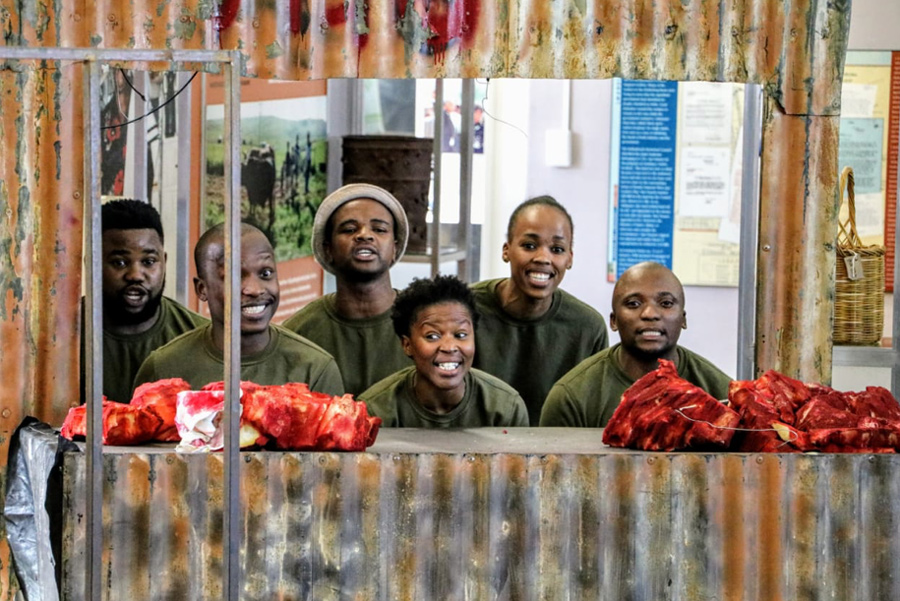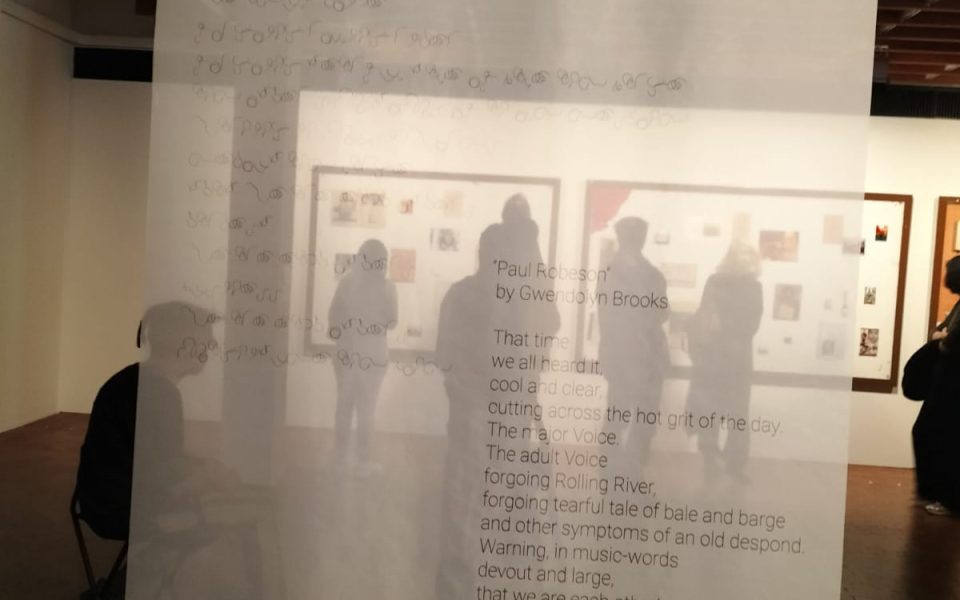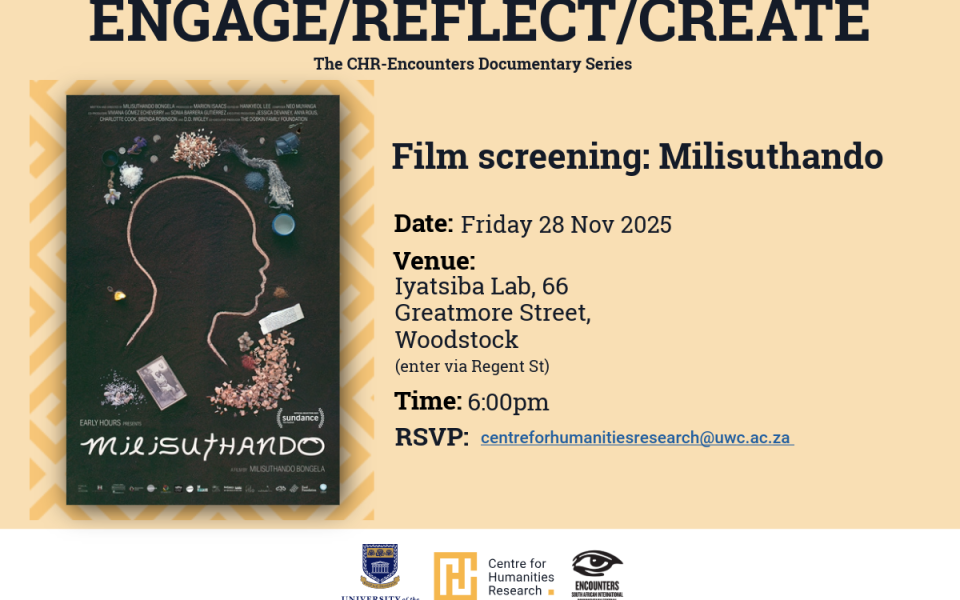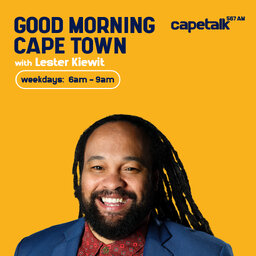KINESIS: Of Moving and Being Moved

This report was written by Professor Jane Taylor.
Between July 6th and July 10th 2019, the Laboratory of Kinetic Objects (LoKO) at the CHR hosted a colloquium on Subject/Object relations, in an ongoing exploration of Animation, Animism, Thing Theory, the Subject and the Object, Puppetry Arts and performance. Below is a report by the Andrew W Mellon Chair of Aesthetic Theory and Material Performance Professor Jane Taylor. The colloquium had several specific aspirations: two of these were to strengthen the ongoing relationship between the CHR and the Jackman Humanities Institute, University of Toronto; and to establish dialogues with the University of Virginia and their Institute of the Humanities & Global Culture, as the CHR begins a series of deliberations about arts and the global Subject. These Institutes, like the CHR at UWC are substantially funded through the generosity of the Andrew W Mellon Foundation. The colloquium also sought to bring together a community of theatre makers, artists, scholars and writers in order to think collaboratively about the extraordinary ways in which complex subject/object conglomerations challenge assumptions about limits and the limitless. The conversations were wide ranging, and interdisciplinary.
YET: If there are no boundaries, there can be no centre; yet as close to centre as it can imagine being (if it can ‘imagine’, and if it can ‘be’) is the puppet. The puppet is the form that perhaps most deftly disrupts the quiet stasis that is necessary in order to maintain subject and object distinctions. The puppet compels us – when it is most successful – to embrace its autonomy, its agency. The puppet need not mimic a ‘naturally live’ being, such as a person or an animal: the puppet can be designed as a typewriter, or a broomstick, or a teapot, yet it can still persuade the audience to embrace its agency, its volition, its affective dynamism. This is an enigma, and it is a principle that has underwritten many engaged questions in various domains from psychology, to film studies, anthropology, commodity theory, theology and exchange theory. What is it that drives the vitalism of the thing?
The CHR has over the past years developed an engaged intellectual interest in ‘the becoming technical of human’ and together with colleagues at the University of Toronto, we have been developing a joint enquiry into a spectrum of theoretical questions that bear upon the questions around the self and its others. This colloquium addressed a range of enquiries in order to engage together on such conceptions as boundaries, identification, projection, care, and possession. These are rich and complex skeins which both confirm and challenge assumptions about the limits of the person (not the same as the limits of the human: because personhood is a legal idea that can be extended to animals, to corporations, and to abstract entities.)
The puppet is but one distinct configuration of the subject/object complex. There are numerous ways in which the person is not limited to her/his anatomical thresholds. The prosthesis, traditionally, signified the material extension of the individual, which compensated for some lack: an artificial limb, say, or a hearing aid, or spectacles, or a wig. These ‘things’ all are now regular deployments in the reparative work that ‘makes us whole again’. This raises the classical philosophical question: ‘does a walking stick begin at my hand’s grasp, or is it inside my mind where the link between stick and hand are activated?’
A recent exhibition at the Wellcome Institute in the UK recently held an exhibition on “War and Medicine” which made the compelling case that the technologies of post-war intervention have accelerated prosthetics’ adventurism, with simulated arms, legs, faces offering new modes of posttraumatic survival. How much of an individual can be replaced before the ‘person’ ceases to be, as a legal, a viable, a moral subject? Value and exchange have been long-time markers of the entanglement of the person and the possession.
Slavery presented itself as a particular mode of captivity; of thing and person to one another. The conception of addiction etymologically is related to slavery and Roman law. If, under Roman law, you owed someone, and could not repay, you were, under law, addicted to the person to whom you owed money – you became their slave – until you could cancel that debt. (Thus, addiction is a slavery – and here the person is indeed captive to the object which controls them.) Capitalism and the wage labour system have wrought particular modifications to the notion of bondage; however, as we know well from Charlie Chaplin’s Modern Times, our modernity has deepened our complex relation to the person/machine cusp. Magical thinking abounds: in some ways in its classical and traditional habits – religious, totemic, animistic – but also through the proliferation of digital doubles: Facebook, avatars, screen presences.
We all know the feeling of catastrophe at the loss of a computer file, or the ‘corruption” of a lap-top’s memory. These are contemporaneous with the classical and traditional modes of apprehension. The voice is and is not part of the self – it is in some ways an extension; in some ways it dominates and determines that self. Musical instruments, too, are prostheses through which we represent our ‘more true’ selves. A spectrum of these questions was raised in and through a program comprising theoretical as well as practical presentations. There were several performances; and a range of focused discussions.
DAY ONE (6 July) was a day given over to discussions about the sound field and its autonomy with relation to persons. CHR Early Career Fellow Valmont Layne presented some of his own history as a sound archivist and activist at the District Six Museum; and sound artist Warrick Sony, (pioneer of South African sound; performer and activist; the original “Kalahari Surfer”) now an affiliate scholar at the CHR, explored some of his own sound archive. The group visited the Mayibuye archive. Sound scholar Professor John Mowitt (University of Leeds) was in conversation with Professor Don McLean, Dean of Music at the University of Toronto. Composer and sound designer Philip Miller, frequent collaborator with William Kentridge and international sound pioneering archivist, shared some of his meditations on the sound archive and its histories of race and human subjectivity.
At the end of the day the group visited the Alexander Bar in the City of Cape Town for a performance by Tony Miyambo, of his memorial performance The Cenotaph of Dan Wa Moriri. In the image below, Miyambo (writer and performer) stands on a table surrounded by numerous small wooden blocks that become household furniture, buildings and gravestones, in an endlessly creative exploration of the kinetic object in the landscape of the mind.
DAY TWO (7 July) was a series of discussions about the ongoing work with the puppetry parade in Smitsville/Barrydale (a town in the Karoo region where we have had a ten-year ongoing annual parade with puppets). The Parade has embarked on several major explorations of animal consciousness. Participants included puppet-maker and educator, Jill Joubert. Joubert was one of the founder members of Handspring Puppet Company. Aja Marneweck, who directs the Smitsviller/Barrydale Parade annually was in conversation with Donna Kouter, one of the mentors at the youth organization Net Vir Pret. In the afternoon there was a lively and provocative discussion between performer Tony Miyambo and director Phala O Phala on “performing the animal”. The day ended with some screenings from the Barrydale puppet parade.
DAY THREE (8 July) saw various practitioners discussing their own arts practice. Jill Joubert and Aja Marneweck who have been been integral to the textures of the Smitsville/Barrydale Parade discussed their own practice; Claudia Orenstien from Hunter College, at CUNY discussed her practice, and gave an overview of various puppetry artists; Gabriel Levine from York University in Toronto, discussed “Pneumatic Life”; and Gerhard Marx, artist and performance maker and designer shared his work on “Vehicle”: a meditation on the object as a source of sound. The work is based in his transformation of two car doors into stringed instruments. At the end of the day, Marianne Kubick from the University of Virginia performed a puppetry vignette on the immigrant and the refugee using finger puppets and voice.
DAY FOUR (9 July) several scholars engaged with the history and theory of puppetry arts.The day began with a freeform writing exercise on the object, led by Professor Lawrence Switzky from the University of Toronto. In the middle of the day Professor Harry Garuba from the University of Cape Town presented a series of provocations and thoughts about animism; asking what animism means in a digital era. His speculations posited new thoughts about Spectral Animism. In the afternoon Professor Dassia Posner (Northwestern University) spoke about the history of Soviet puppetry and theatre arts; and Professor Veronika Ambrose (University of Toronto) spoke about the history of Czech puppetry.
DAY FIVE (10 July) began with some discussion of subjects and objects. Ross Truscott (a CHR Next Generation Scholar) explored another dimension of the moving object by sharing some of his research on the history of the postal service in South Africa; and Iona Gilburt, a CHR post-doctoral Fellow, explored bio-medical research and the impact of cybernetic theory of feedback, in order to consider the new thresholds of pharmaceutical delivery to the ailing subject; and shared some of her own aesthetic explorations of the arts of the digital figure. At midday, participants travelled to Tshisimani Centre for Activist Education in Mowbray where a performance by Nhlanhla Mahlangu was given.
There was also a handover of an airticket to Russia to one Asanda Rilityana, one of the young performers who has over the past year been involved in performing with uKwanda, the puppeteers who are artists in residence at the CHR. Rilityana has been a core member of the company in their performing of Warona, a play for school children warning of the impact of drug addiction on South Africans. Rilityana has been awarded a residency to study puppetry arts in Russia. The residency is funded by UNIMA International; and her airticket was funded by Handspring Puppet Company as well as UNIMA South Africa.
The day ended with a visit to the Norval Museum in Steenberg; where we had an opportunity to see a major exhibition of photographs on The Mines by the late David Goldblatt; as well as recent installation of Yinka Shonibare’s The African Library; as well as Ibrahim Mahama’s monumental installation of Cocoa sacks, Labour of Many.
Our thanks to the Norval Museum for their generosity in welcoming our group as visitors to the Museum; and to the Tshisimani Centre for Activist Education for the use of the space for Nhlanhla Mahlangu’s performance; and to the Alexander Bar for opening their theatre for a special performance of Tony Miyambo’s Cenotaph of Dan Wa Moriri.




